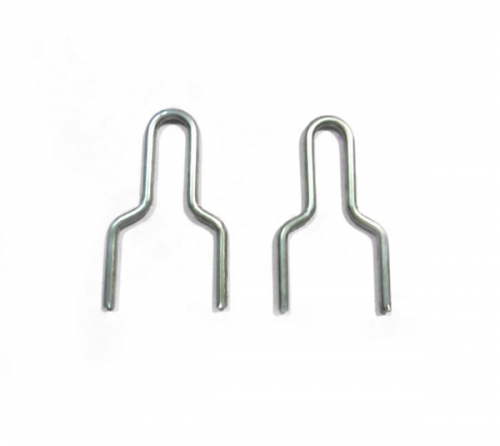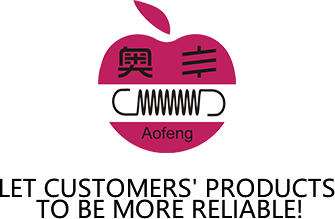Foshan tensile spring manufacturer
Date of release:2020-07-30 00:00:00 Author: Click:
As a representative of springs, extension springs are widely used, but in different industries and fields, there are different regulations for the materials, dimensions, and processing techniques of extension springs. You must be careful in selection, so you must understand Knowledge of extension springs is necessary to assist in selection. Let's follow the editor to learn more about the extension spring.
1. Definition
Tension springs are also called coil springs and compression springs. They are springs that provide resistance to the external load. When a load is applied to the extension spring, the spring will become shorter, then resist the load, and finally return to its original length. The most common type of spring is the most effective mechanical element for storing energy.

2. Common materials for making tension springs
Common materials for making tension springs are carbon spring steel wire, piano steel wire, and stainless steel spring steel wire. The carbon spring steel wire is made of high-quality carbon steel wire rod, which is cold drawn and strengthened after lead austempering. It has the characteristics of low plasticity, strong elasticity, and strong strain resistance. It is mostly used in mattresses, car cushions, machinery manufacturing, and stationery Power tools, electrical equipment and other industries. The piano wire is made of a piano wire plate, which is made by lead quenching and drawing at room temperature. It has a very high elastic limit and strength limit. It is a widely used small spring material. This type of tension spring is used in safety valves. Stainless steel extension springs are made of stainless steel wire after quenching and tempering, and can be used in chemical machinery and electronic equipment in the fields of high temperature resistance, corrosion resistance, and non-magnetic.
Third, the direction of the tension spring coil
The coil of a tension spring is like the thread of a screw, with left-handed and right-handed directions. When in use, if you want to install one tension spring into the other, you must ensure that the two tension springs are installed in opposite directions. If the bolt must be screwed into the tension spring, it must be ensured that the direction of the bolt matches the direction of rotation of the tension spring. The actual situation must be considered when selecting, otherwise it cannot be matched.
Four, tension spring classification
Extension springs are classified into cylindrical, conical, concave, convex, and rectangular extension springs in shape. Cylindrical extension springs are the most widely used one, but others have different shapes. Springs are also used in different fields. For example, conical tension springs are commonly used in daily life to fix the battery and connect the positive and negative poles to form a loop; the concave tension spring can withstand larger loads and has a vibration damping effect, and the key is used in cushions and mattresses; Compared with cylindrical and conical extension springs, the convex spring with a smaller ring can bear greater load and obtain greater deformation, but the design is difficult and the production is troublesome. The rectangular extension spring uses a square wire. Compared with the round shape, it has greater carrying capacity and longer service life, and is widely used in stamping dies, metal die-casting molds, precision machinery and equipment, automobiles and other fields.
Five, tension spring process
In order for the extension spring to have its own characteristics, it must undergo rigorous heat treatment to improve the fatigue performance of the extension spring during dynamic operation and the resistance to deformation during static operation, so that the extension spring is rigid and flexible. It can be just right. Heat treatment is divided into hot forming heat treatment and cold forming heat treatment process according to the different dimensions of the extension spring. The characteristics of the extension spring under different processes are also different. Hot forming is used for the coiling of large springs. The heated springs are very easy to be twisted and formed, with low resilience, and need to be tempered at medium temperature after quenching; cold forming is used for coiling spring steel wires with high resilience and needs to be cold-rolled Carry out tempering treatment.
The address of this article:http://en.afthcn.com/news/646.html
Key word:Tensilespringmanufacturer,Torsionaspringmanufacturer,Shapedspringmanufacturer
Recently browse:
Related products:
Related news:
- Operation specification for precision hardware processing
- How to let stretch spring manufacturers get rid of cracks
- Torsional spring manufacturers working principle
- How does the stretch spring manufacturer prevent corrosion
- Heterosexual spring manufacturer: What are the functions of springs?
- How to better choose the cleaning agent for precision hardware
- Why does the stretch spring manufacturer test it?
- Shaped spring manufacturers in the production of defects will appear
- Stress test method for special-shaped spring manufacturers
- The safety of torsional spring manufacturers is the most important












